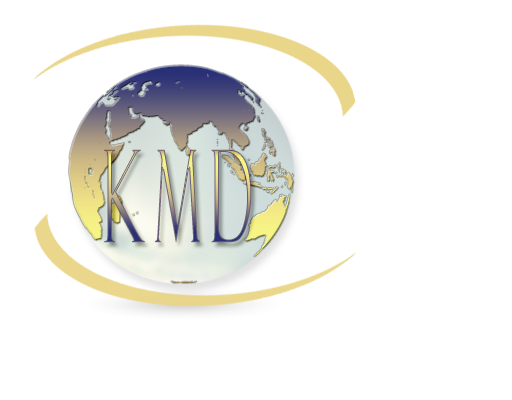Employees are an organization’s most valuable asset. It’s crucial to recognize outstanding performance and help those who are falling short understand what they’re doing wrong. But how do you identify those who are succeeding on your team and those who could use some extra help?
Measuring and improving employee performance is essential for maintaining a high level of output and identifying employees who are underperforming. This allows you to take appropriate action to boost business productivity. This article discusses the value of measuring employee performance, suggests employee productivity strategies, explains the many approaches to assessing team members, and specifies the most important metrics for doing so.
Let’s dive in!
Key Takeaways
- Effective employee performance measurement is essential for productivity and a positive work environment.
- Simple methods like task follow-up, OKRs, Sprints, and project tools contribute to successful assessments.
- Communication technologies and addressing the root causes of poor performance are critical for organizational success.
How Do We Measure Employee Success?
Performance evaluations don’t have to be complicated. It’s a common misconception among managers that expensive software or complex analytical methods are required to effectively monitor and assess employee performance. This, however, is not the case.
A team member’s performance is evaluated based on the value they add to the organization in terms of their efficiency, productivity, and quality of work. All aspects of an employee’s performance in their jobs and their contributions to the company’s success are included in this evaluation and are crucial for improving workplace productivity.
Employee performance evaluations consist of more than just numbers. It also takes into account less tangible skills like the ability to communicate clearly, work well with others, solve problems creatively, and be adaptable.
Here are a few basic methods that can be used to assess an employee’s performance.
Follow-Up On Tasks
One of the simplest methods to gauge efficiency in a workspace is to keep tabs on who has been working on what. Both the length of time that it takes them to complete the task or the extent to which they’ve been effective in discovering the answer could be the deciding aspect.
Managers should track the timeliness with which tasks are accomplished. Punctuality and efficient task completion not only demonstrate an employee’s commitment but also contribute to overall team productivity.
Monitoring the quality of completed tasks is equally important. This involves assessing the accuracy, attention to detail, and adherence to established standards. High-quality work not only reflects positively on the employee but also contributes to the organization’s reputation.
Create Personal OKRS and Trackable Targets
OKRs (objectives and key results) are a terrific method to define the most important milestones and outcomes expected of your staff in a specific time period, as well as to keep them engaged and moving in the right direction.
The objective is the overarching goal you want to accomplish, providing a clear direction for your efforts. The key results are specific, measurable steps that indicate progress toward that objective. Think of the objective as the destination and the key results as the map guiding you on your journey.
Let’s consider a practical example. Imagine your objective is to enhance your leadership skills. One key result could be attending a leadership seminar, another might involve successfully leading a team project at work, and a third could be receiving positive feedback on your leadership from colleagues or supervisors. These key results are tangible, measurable milestones that align with your broader goal of improving leadership skills. This approach makes sure that your aspirations are not just vague wishes but concrete, achievable targets.
Measure Progress By Using Sprints
Several advertising and product groups use the Sprint model to improve communication and collaboration between staff members in the face of time constraints. It encourages workers to evaluate their methods which helps in improving workplace productivity based on that evaluation.
Employees are given tasks during a sprint and given a short amount of time (often 5 days) to finish them. As a result, productivity soars as workers race against the clock to complete their tasks in time or beat the deadline by excelling under pressure. Workers are aware of their weekly objectives and are responsible for determining how to break them down into manageable chunks of time.
After a sprint is over, team members reflect on their work, discuss what went well and what could be improved, and create a plan for moving forward.
Use Tools for Managing Projects And Tasks
It’s safe to say that managing employee relationships has been challenging during COVID-19 because of the Great Resignation, workplace circumstances, and deterioration of work-life balance due to remote work. Many businesses have adopted a hybrid approach to work, but they are still figuring out strategies for measuring employee productivity in this new environment.
If you want to keep your team on track, investing in a project or task management application is a smart move. Team members and managers can keep track of deadlines for a productive workflow, share status updates with one another, and prevent burnout with the help of tools like Asana, Airtable, Basecamp, and Microsoft Project.
The prevalence of burnout among workers is at an all-time high, and remote work tools are a great way to keep tabs on productivity without adding extra stress.
Check for Skills Gaps
Spotting and tackling skills gaps in your employees is like giving them a boost toward success while supercharging your team’s productivity. Start by having friendly chats about their roles and where they see themselves heading. This helps uncover areas where a little extra skill power might come in handy.
Once you’ve identified these gaps, it’s time to get creative with solutions – tailoring a plan that fits each employee’s needs. This could mean workshops, online courses, or hands-on training. For instance, if someone needs to level up their tech skills, a targeted training session can do the trick.
Now, you can measure productivity in this context by setting clear goals tied to skill development and checking in regularly. It could be hitting milestones like finishing a course, applying new skills on the job, or getting a thumbs-up from team members. This way, you’re not just counting tasks completed but celebrating the growth and talents of your team.
How to Improve Employee Productivity
Getting better results from your staff and improving productivity is easier said than done. If you really want to succeed at improving workplace productivity and team performance in your workspace, consider the following guidelines:
Use SMART Goals
When workers lack direction and purpose in their work, productivity and enthusiasm suffer.
Managers are responsible for defining clear goals for their employees so that everyone on the team understands what is expected of them. Employees’ efforts and output are enhanced by having goals to work toward. When employees are tasked with achieving a goal, they have the freedom to come up with creative solutions to solve a problem.
The SMART goals (specific, measurable, achievable, relevant, and time-based) framework can be used to set clear and measurable performance targets that will motivate employees all year long. With the information gleaned from tracking progress toward these objectives, managers will have a baseline against which they can compare future performance.
Use Rewards and Appreciation
Rewards and appreciation help amplify your employee’s performance and keep them motivated. They even go one mile ahead to deliver exceptional results, especially when there is a reward tied to it. Here are some tips to implement employee rewards:
- Competitive Compensation: Make sure that your staff is well-paid. Monetary rewards, such as cash bonuses, are appreciated, but it’s not just about money. Fair compensation is fundamental for employee satisfaction and retention.
- Recognition and Appreciation: Publicly acknowledge employees for their contributions. A simple “thank you” in team meetings, appreciation emails, or handwritten cards can make a significant impact.
- Dual Approach: While monetary rewards are great motivators, supplement them with consistent appreciation. Combining financial incentives with regular acknowledgment creates a powerful motivational blend.
Remember, fostering a positive work environment involves not only paying well but also actively showing gratitude for the efforts that contribute to the company’s success.
Get to the ‘Why’ and Fix it
Identify and address the root cause of poor performance to improve team productivity and overall organizational effectiveness. Follow these steps:
- Understand the Issue: Take time to pinpoint the cause. Is it a mismatch of skills, inadequate training, demotivation, workload, or personal challenges affecting performance?
- Create a Plan: Develop a targeted plan based on the identified problem. This could involve recognizing achievements, setting realistic goals, offering support, adjusting workloads, or adapting training strategies.
- Honest and Supportive Feedback: Provide constructive feedback to employees, highlighting specific areas for improvement.
Conclusion
As we wrap up this productivity journey, remember that the pursuit of productivity isn’t about turning employees into productivity robots. It’s about creating an environment where they can thrive, continuously learn and contribute their best to the team.
If you’ve found these insights valuable and are eager to take your team’s productivity to the next level, consider reaching out to KMD Business Consultants. We specialize in business consultancy services and can be your trusted guide in identifying tailored strategies to measure and enhance employee productivity.
Let’s unlock the full potential of your team together – because when your team succeeds, your business soars!



